For some, a visit here feels like a journey into the past. For others, it’s the fulfillment of childhood dreams of stepping into a fairytale town. What will your visit to one of the most beautiful spots in Alsace be for you?
Colmar is a small French town in the Grand Est region. Its history dates back to 823, as this was the first time the town was mentioned in writing. Its location near natural borders has repeatedly left a mark on the town’s fate and its inhabitants. For example… between 1632 and 1634, during the Thirty Years’ War, Colmar was occupied by Swedish forces. In 1697, it was annexed to France under Louis XIV. After France’s defeat by Prussia, the town was incorporated into the German Empire. After World War I, Colmar returned to France, but following another French defeat in World War II, Colmar (like all of Alsace and Lorraine) came under Nazi rule. It wasn’t until February 2, 1945, that the town was liberated by French-American forces and rejoined France once again.
FUN FACT: In 1834, Frédéric-Auguste Bartholdi, the creator of the Statue of Liberty, was born in Colmar.
Exploring Colmar
Despite its turbulent history, Colmar has managed to preserve its idyllic small-town atmosphere over the centuries, especially noticeable in its historic center. This part of the town is the main reason millions of tourists visit each year.
The expansive pedestrian zone, cobblestone streets, and beautifully preserved, colorful Alsatian-style houses make a visit to Colmar feel like a journey back in time. The town’s architecture catches the eye of most visitors, as Colmar boasts a large number of historical landmarks and heritage homes, considering that the town itself is relatively small in size (66.57 km²).
Colmar’s historic center, in addition to being a treasure trove of local history, is also the perfect place to find unique souvenirs. Souvenir shops can be found not only on the main streets but also (and perhaps especially) in the small, charming alleys, where local artisans and craftsmen often have their workshops. The most common themes for souvenirs are storks, pretzels, and timber-framed houses, as these elements are the most iconic symbols of Alsace.
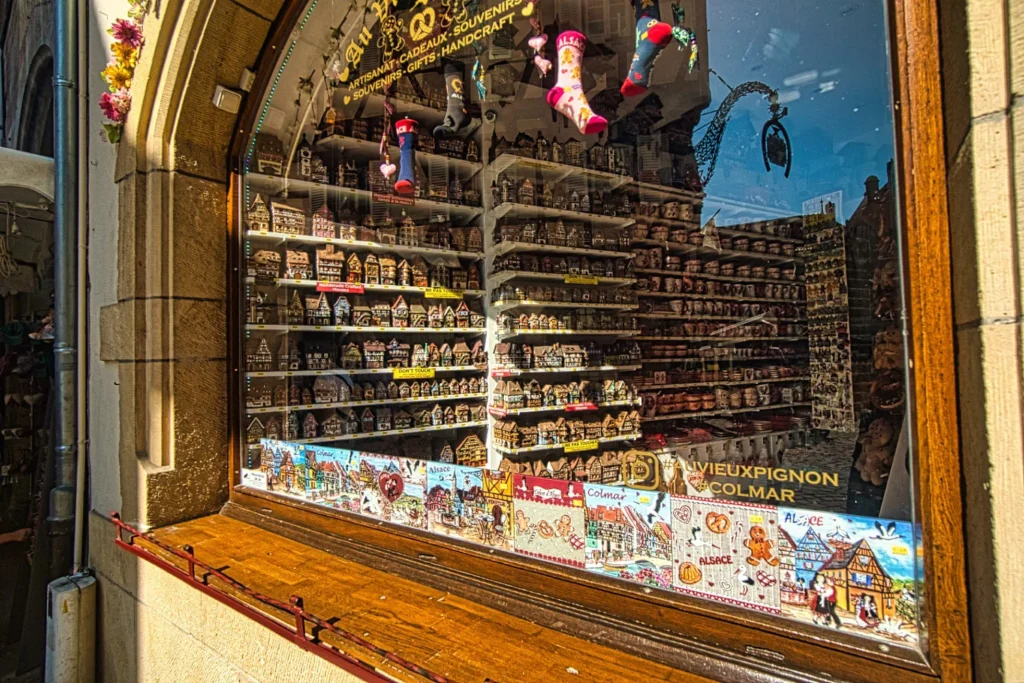
GOOD TO KNOW: If you plan to spend more time exploring Alsace, consider purchasing the Pass Alsace. This special pass offers free entry to over 60 tourist attractions in the region, making it a great way to save money while fully enjoying the experience. You can purchase the Pass Alsace on this website.
La Petite Venise, or Little Venice in Colmar
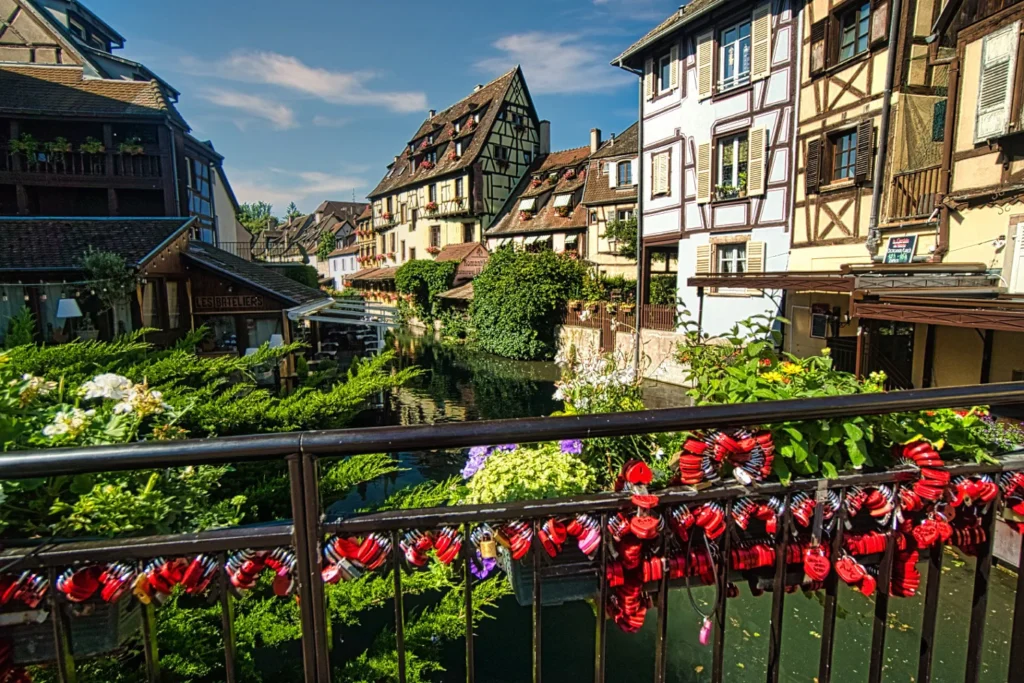
Little Venice is one of the most popular districts in Colmar. Interwoven with small canals and charming little bridges, it attracts not only romantics but anyone looking to escape into an alternative, almost fairy-tale reality. The railings of the bridges are adorned with colorful flowers and red love locks, placed there by couples as a symbol of their affection. All of this is surrounded by picturesque houses, which you can admire both while strolling through the streets and from aboard one of the tour boats that offer a fresh perspective on Petite Venise.
The Fishermen’s District and the Tanners’ District
Adjacent to Little Venice in Colmar are two of the most famous districts in the old town. The first is Quai de la Poissonnerie, or the Fishermen’s District. In the past, most of the city’s professional fishermen lived along the riverbank here. Renovation work carried out between 1978 and 1981 uncovered the timber-frame construction of the houses in this district, which can now be seen on many postcards from Colmar.
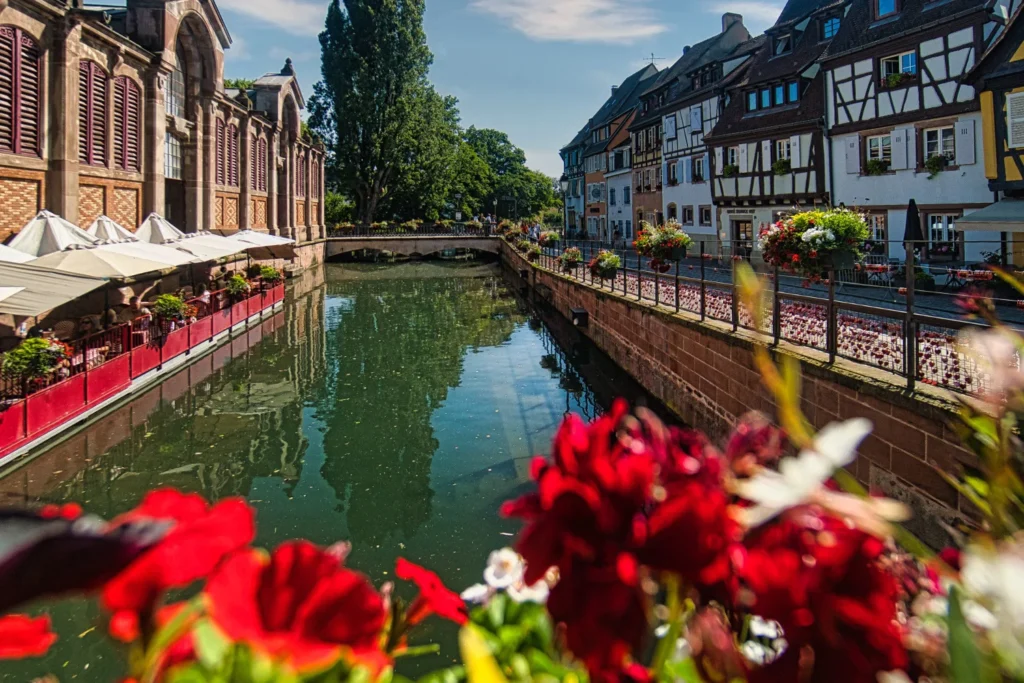
The Tanners’ District (fr. Le quartier des Tanneurs) is characterized by tall half-timbered houses. As the name suggests, this area was predominantly inhabited by tanners. The homes often served as workplaces, with the upper floors used to dry hides. Renovation of this district took place between 1968 and 1974, restoring its beauty and bringing new life to this extraordinary part of Colmar.
Marché Couvert – Popular City Market
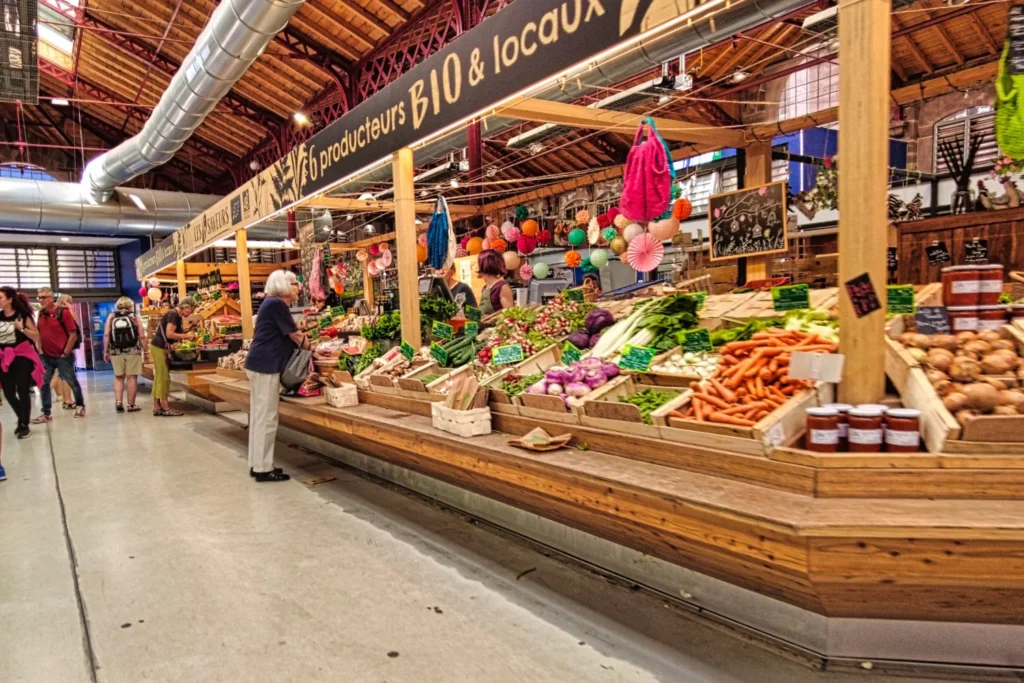
While wandering through La Petite Venise, sooner or later you’ll come across the 19th-century building of Marché Couvert, a covered market popular with both locals and tourists. Here, you can buy fresh fruits, vegetables, cheeses, charcuterie, bread, wine, and many other local food products. It’s also a great spot to grab a coffee or a light snack during your tour of Colmar, as there are several small cafés and eateries inside Marché Couvert.
Cathedral Square and the Church of Saint Martin
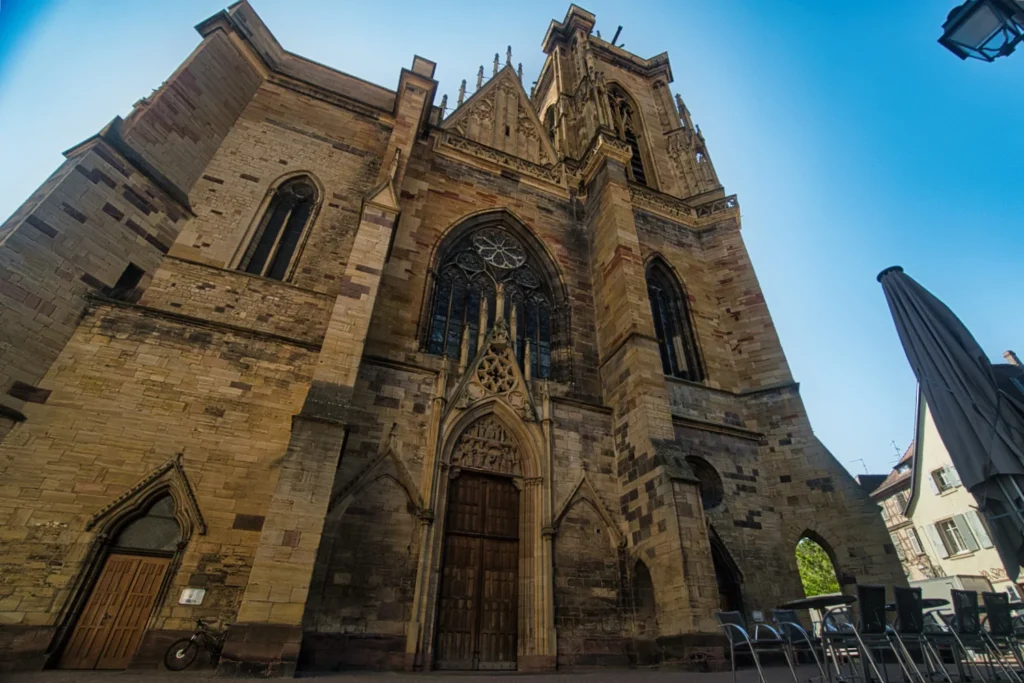
As you approach Cathedral Square (Place de la Cathédrale), you’ll undoubtedly notice the imposing Collegiate Church of Saint Martin (Collégiale Saint-Martin de Colmar). It’s the largest Christian church in Colmar and one of the largest in the Grand Est region. Built between 1235 and 1365 in Gothic style, the church has been well-preserved through numerous renovations. Despite its cathedral-like dimensions (78 meters in length, 34 meters in width, and 71 meters in height) and exquisite craftsmanship, it only held the title of a cathedral from 1790 to 1801.
The House of Heads and Other Historic Houses in Colmar
The House of Heads (fr. Maison des Têtes) gets its quirky name from the more than one hundred grotesque heads adorning its facade. Built in 1609 at the behest of Anton Burger, the design of the building is attributed to Albert Schmidt. In addition to the heads, a distinctive feature of the house is the three-story oriel. The combination of these elements with the bright facade makes it hard to miss while strolling through the city.
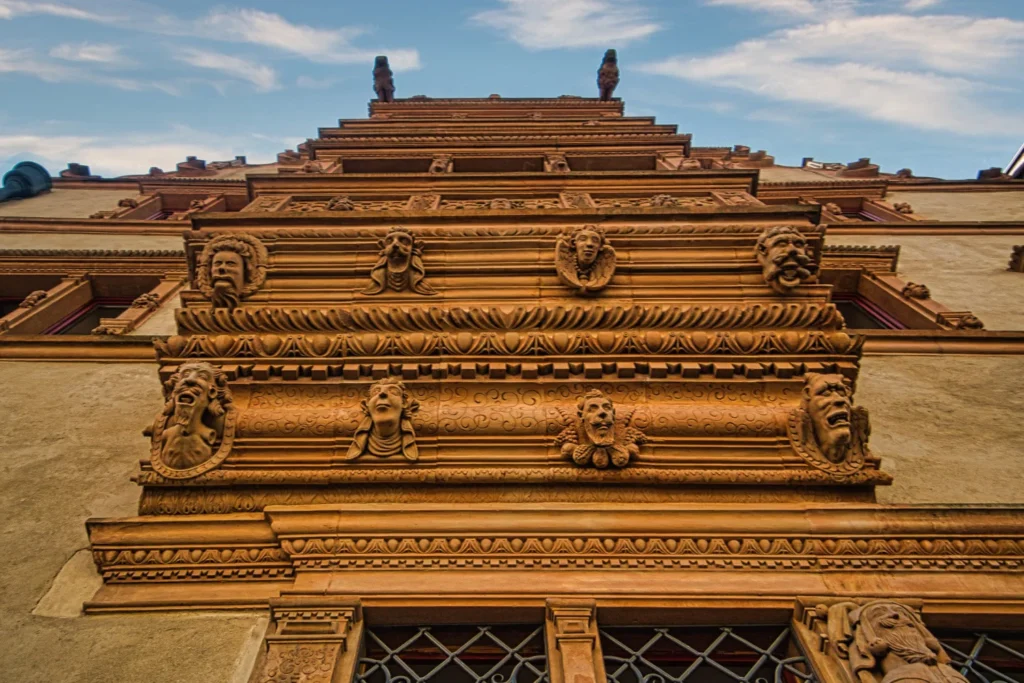
Equally striking is Maison Pfister, constructed in 1537 at the request of Ludwig Scherer. While the architecture of this building retains some medieval elements, it’s considered the first example of Renaissance architecture in Colmar. Notable features include the unique corner oriel, wooden gallery, hexagonal tower, and frescoes depicting both secular and biblical scenes. The excellent condition of the building is partly due to renovations carried out by the Pfister family, who lived there from 1841 to 1892, giving the house its current name.
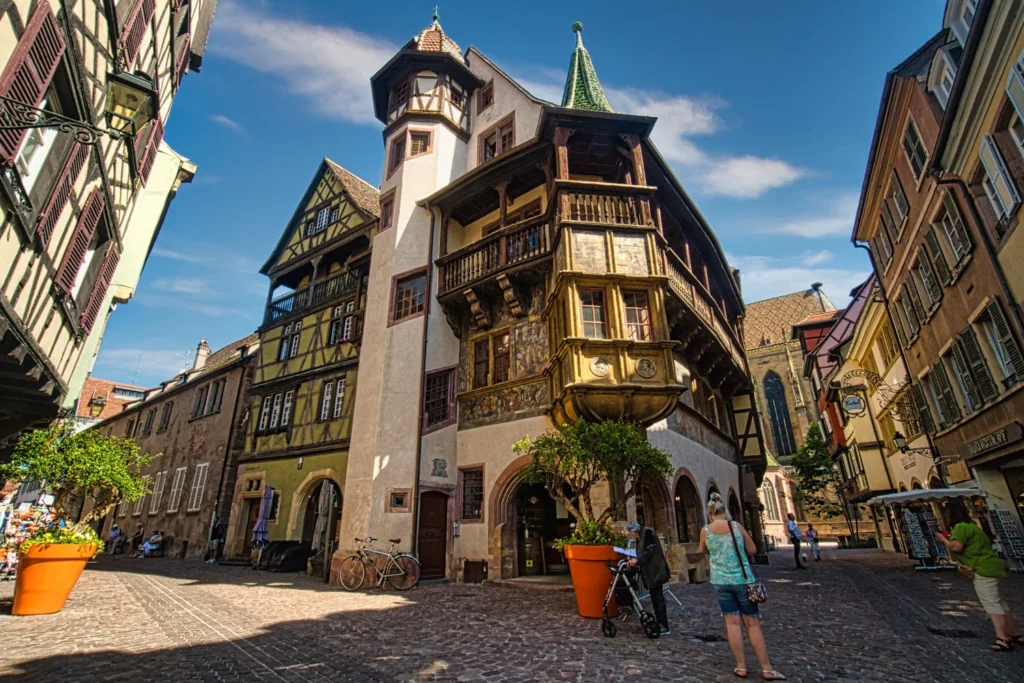
If you enjoy time-traveling experiences, be sure to add Maison Adolph to your list of attractions. It is one of the oldest buildings in Colmar, dating back to around 1350. Other noteworthy historic houses include Maison où séjourna Voltaire, Maison zum Schwan, and Maison des chevaliers de Saint-Jean.
Interesting Museums
Despite its small size, Colmar is home to several fascinating museums. The most well-known is probably the Musée Unterlinden, a museum dedicated to art from prehistoric times to the 20th century. Housed in a 13th-century Dominican convent, some of the exhibits date back 7,000 years. The museum’s collection places special emphasis on works from the Middle Ages, Renaissance, and the French Revolution. One of its most famous pieces is the Isenheim Altarpiece, created by Matthias Grünewald.
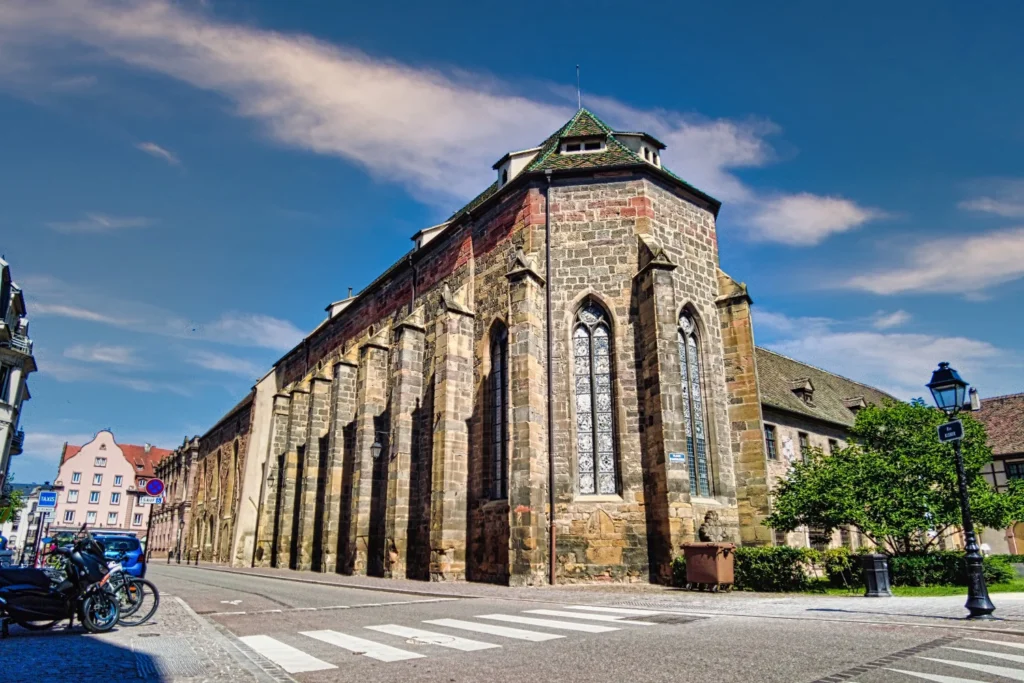
Another must-visit is the Bartholdi Museum (Musée Bartholdi), located in the house where sculptor Frédéric Auguste Bartholdi was born. The museum’s collection includes numerous sculptures, busts, original models, drawings, sketches, and paintings. The centerpiece, however, is the Statue of Liberty model, known as “Liberty Enlightening the World.” This is the largest replica of the original Statue of Liberty in New York.
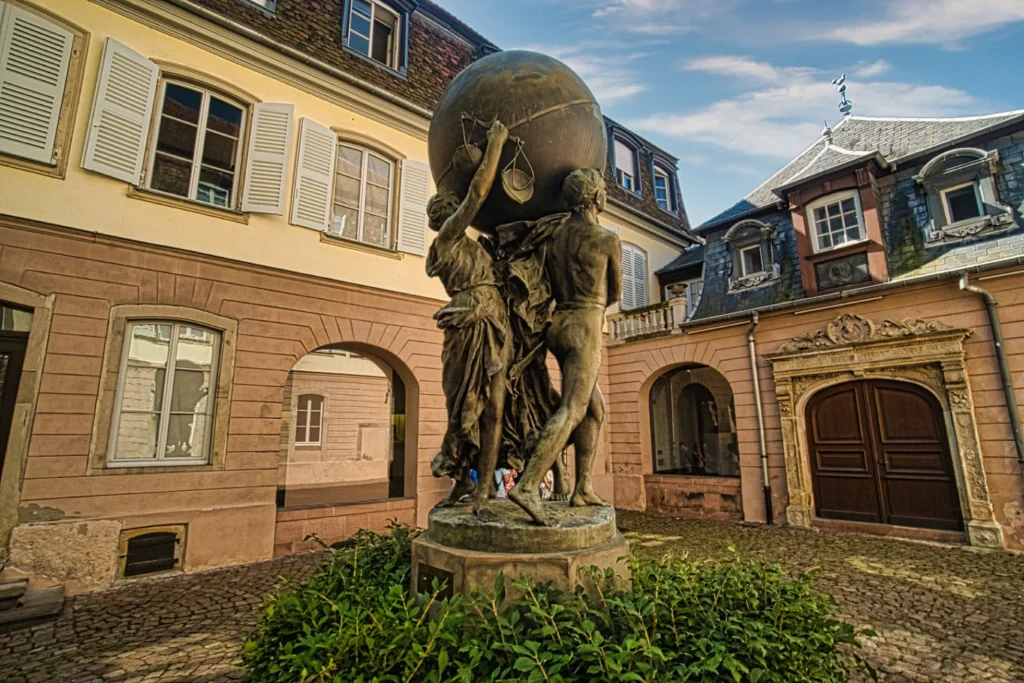
FUN FACT: When creating the Statue of Liberty, Auguste Bartholdi was inspired by one of the Seven Wonders of the Ancient World—the Colossus of Rhodes, which represented Helios, the god of the sun.
Other museums in Colmar worth visiting include the Museum of Natural History and Ethnography, the Chocolate Museum, and the Toy Museum. These three are sure to delight younger visitors as well, offering engaging experiences that ensure no one will be bored.
When to visit Colmar?
You can visit Colmar any time of the year, as the tourist season here runs year-round in its own way. Summer and early autumn are ideal due to the abundance of flowers, whose fragrance fills the air. However, if you’re not fond of heat or large crowds of tourists, early autumn is also a great choice. The temperatures are optimal for peacefully exploring all corners of the old town.
What about winter? Before Christmas, Colmar transforms into the epicenter of Christmas markets, which are incredibly popular throughout Alsace. The air is filled with the scent of roasted almonds and mulled wine, the historic center is illuminated by colorful lights, and festive decorations create an atmosphere that can lift the spirits of even the grumpiest visitors.
1-Day Trips to Colmar
For some, Colmar is just one of many stops during a longer stay in Alsace. If you’re one of those people, you have the option to organize your visit to the town independently or use the services of an experienced guide. Many interesting tours of the town (as well as attraction tickets) can be found and booked through GetYourGuide. Depending on the chosen option, tours last from one to several hours and cover different sightseeing programs. Some even include transportation from and to another city (e.g., from Strasbourg or Basel).
Colmar for a weekend or longer
If you want to spend more time in Colmar, I recommend choosing a hotel located close to the historic center. This way, you won’t waste time getting to the old town, where most of the attractions are concentrated. Some of the most interesting hotels to consider are:
- Hotel Saint-Martin – a 3-star hotel with rooms decorated in the Alsatian style,
- Ibis Styles Colmar Centre – a 3-star hotel with modern interiors,
- Hôtel Quatorze – a 4-star hotel combining tradition and modernity,
- Hôtel Le Rapp – a modern 4-star hotel with an indoor pool,
- Relais & Châteaux La Maison Des Têtes – a 5-star hotel in a beautiful historic building.
Just a short distance from Colmar, you’ll also find several other picturesque towns like Kaysersberg, Eguisheim, Ribeauvillé, and Riquewihr. These towns are smaller and less crowded with tourists, making them an excellent option for a romantic getaway. The quickest way to reach these places is by car. If you don’t have your own, remember that you can always use the RentalCars service to rent any car for one or more days.